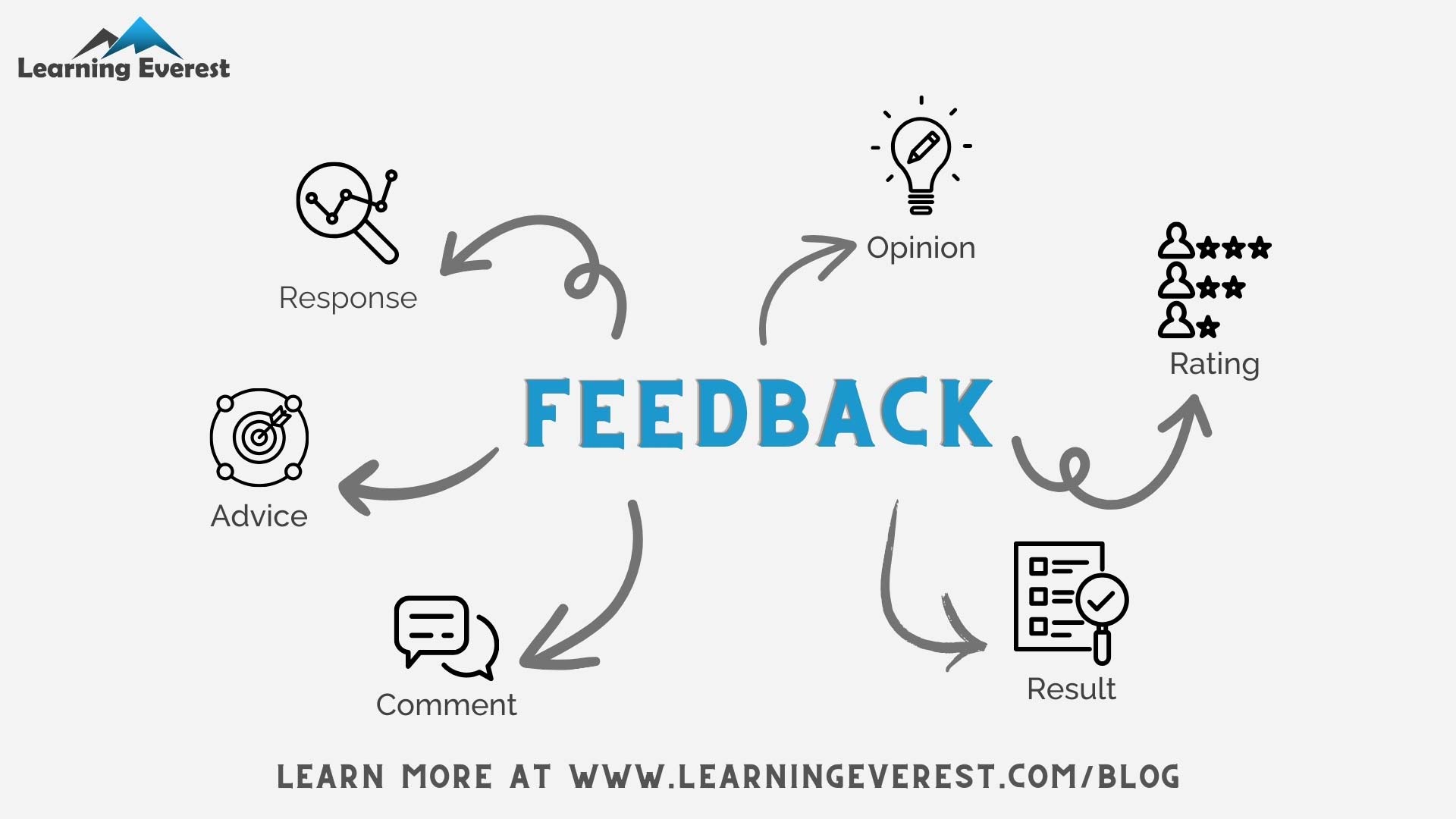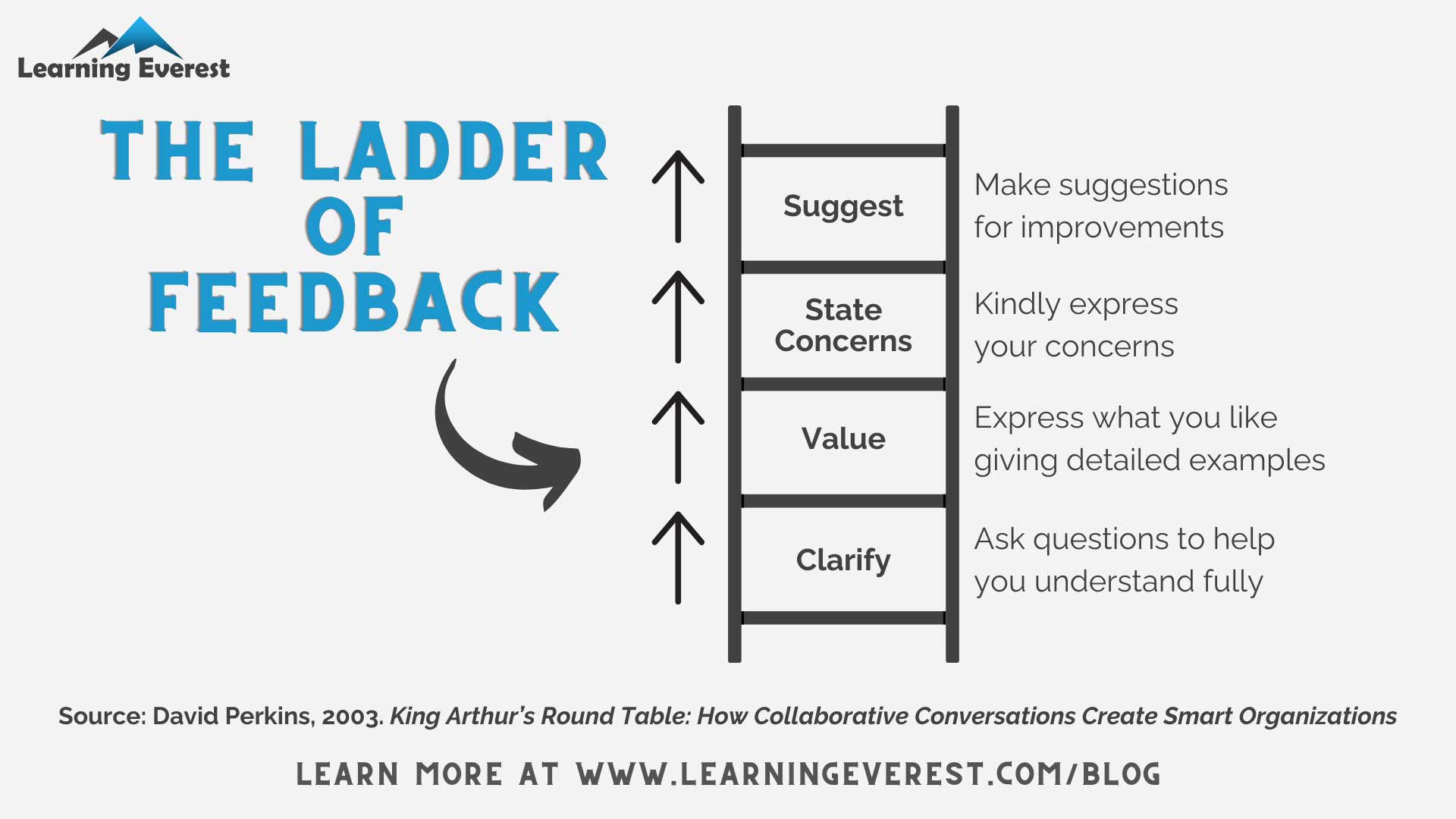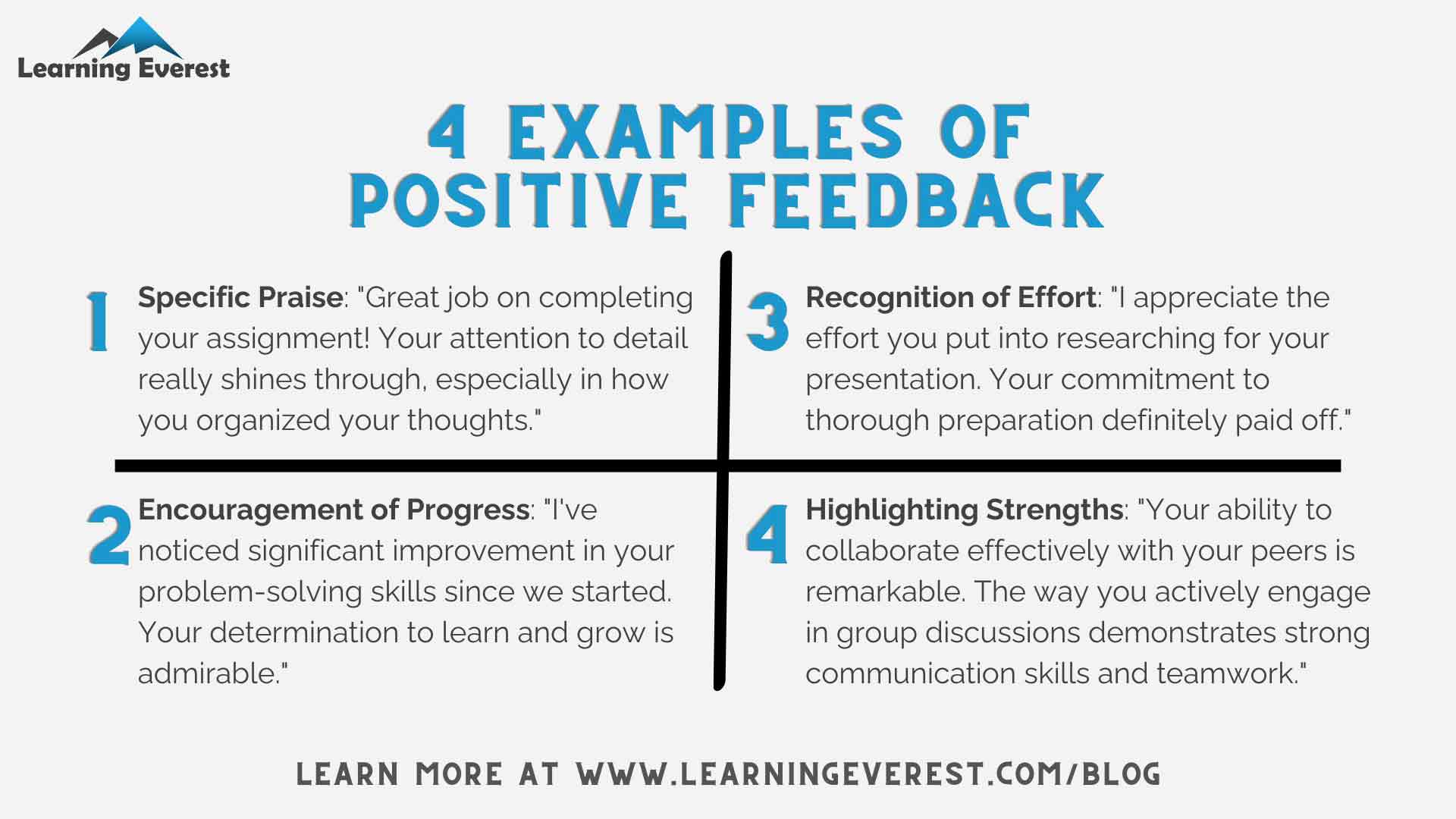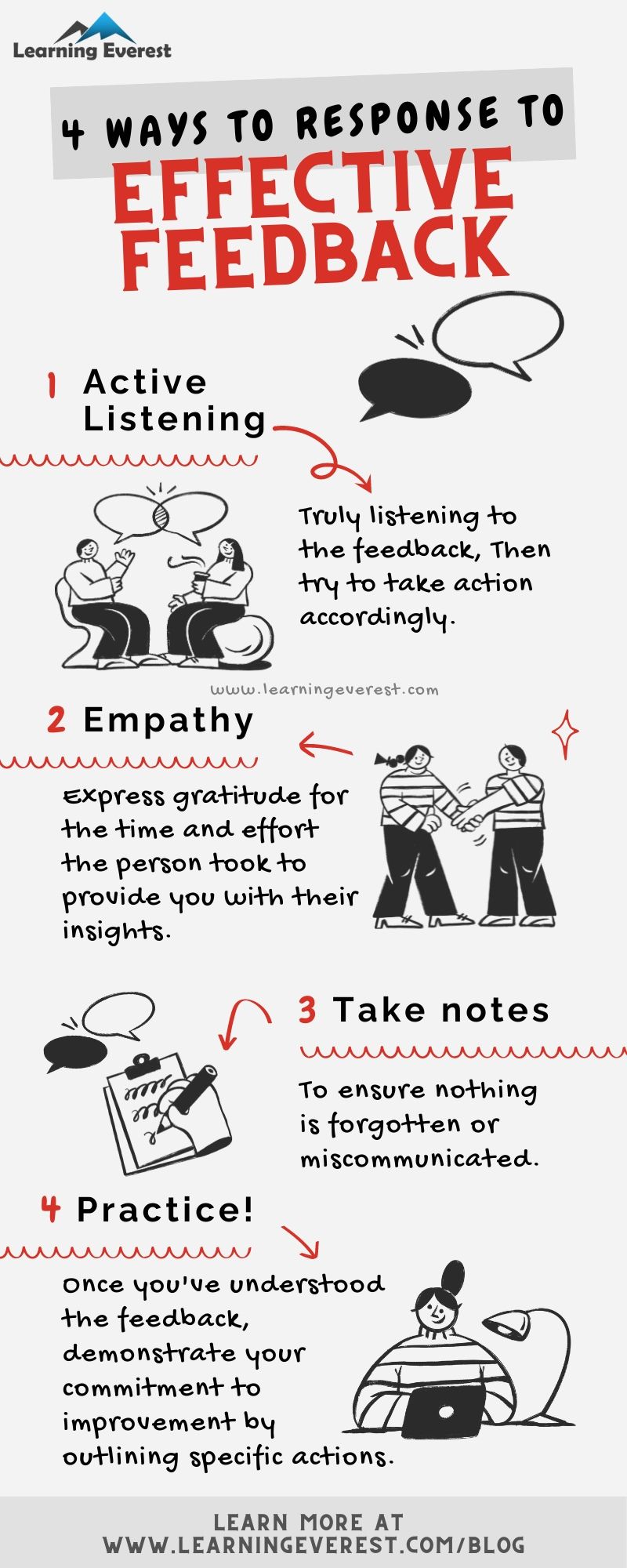This blog will disclose how understanding the role of feedback and mastering the art of feedback can transform the learning experience, making learning an act of acquiring and a continuous loop of reflection, adaptation, and advancement.
Table of Contents
- What is feedback and the role of feedback?
- Types of feedback in the learning experience
- The Important Role of Feedback in Improving the Learning Experience
- How to provide constructive feedback to improve the learning experience
- Infographic
- Knowledge Check!
- Frequently Asked Questions (FAQs)
- Why is feedback important in learning?
- How do you provide feedback for learning?
- What is the purpose of feedback?
What is feedback and the role of feedback?
In general, feedback is the information about someone’s performance or behavior to guide future improvements. It is a critical mechanism in various contexts, such as education, the workplace, personal development, etc. Feedback can be positive, reinforcing desired behaviors or performance, or negative (constructively), highlighting areas for improvement and suggesting ways to achieve better outcomes.
Now, feedback can be a valuable asset in improving the learning experience. It refers to information given to learners about their performance relative to learning objectives or outcomes. It is a critical component of the learning process, providing learners with insights into what they have mastered, areas where they need improvement, and guidance on enhancing their understanding and skills. Feedback can be provided by instructors, peers, self-assessment, or through automated systems, especially in digital learning environments.

What is Feedback?
Types of feedback in the learning experience
There are several types of feedback, each serving a specific purpose in the learning experience.
Formative feedback: Many organizations adopt this type of feedback for evaluating productivity during learning to guide improvement and understanding. It’s ongoing and helps learners reflect on their learning process, identify areas for improvement, and adjust their strategies accordingly. Its structure is simple and objective, allowing trainers and learners to discuss what they can improve in their learning strategy.
Summative feedback: Organizations adopt this type of training because they want to provide overall feedback after completing the learning experience. This type of feedback, therefore, is provided after completing a task, module, or course. While it doesn’t influence the activities it assesses, it’s valuable for reflection and planning future learning paths.
Descriptive feedback: As the name suggests, this kind of feedback is used to describe the consequences of an individual’s action. Descriptive feedback is believed to be the best form of evaluation in the workplace and other similar domains, such as education and science. It includes specific suggestions for improvement and how learners can achieve their goals. This type of feedback is crucial for promoting growth and development, as it provides actionable advice that learners can apply.
Peer feedback: Peer feedback is when learners provide one another with feedback on their work or performance. It encourages collaborative learning environments, enhances self-assessment skills, and provides a diverse range of perspectives on performance. Engaging in peer feedback using the relevant assessment criteria allows learners to explore these criteria and standards in the context of a specific task.
360-Degree Feedback: Although more common in organizational settings, 360-degree feedback can be adapted for educational environments. It involves collecting feedback from all directions—trainers, peers, and self-assessment—to provide a comprehensive view of a learner’s performance. This holistic approach helps identify strengths and areas for improvement from multiple perspectives.

The Ladder of Feedback
The Important Role of Feedback in Improving the Learning Experience
Here’s precisely why feedback matters so much.
Reason 1: Keep everyone on the same page
Feedback is essential in keeping all team members aligned with organizational goals and expectations. If someone’s neglecting to meet expectations or slowing the progress of others, constructive feedback (not judgment or anger) is a productive way to get that person back up to speed. It ensures that everyone moves forward together, maintaining a cohesive and productive work environment.
Reason 2: Create better relationships
One component of the importance of feedback is that when team members feel comfortable providing constructive criticism, employee relationships are strengthened. Regular, constructive feedback can preempt issues related to differing learning styles or misunderstandings by ensuring all voices are heard and respected.
Additionally, regular and productive feedback reduces the space for conflict to begin with. In a sense, providing this feedback in a structured way gets ahead of problems before they become conflict. Importantly, creating better relationships through understanding the importance of feedback means leaving space for such dialogues at all times. While quarterly or annual reviews are excellent, the best feedback is open and honest at all times.
Reason 3: Avoid major mistakes
The importance of feedback in the workplace extends beyond better relationships — it enhances productivity and workflow. When organizations create a culture that welcomes these discussions, significant mistakes are more readily avoided. This proactive approach also prevents the buildup of resentment or frustration that might arise from unaddressed mistakes.
Reason 4: Personal and professional growth
The importance of feedback for personal and professional growth can’t be understated; most people actively desire constructive feedback.
According to Harvard Business Review, 72% of employees feel corrective feedback from managers would improve their performance. The same study also found that 57% of people prefer feedback to pure praise.
Feedback gives employees a chance to see themselves differently and understand how others perceive them. Often, people aren’t aware of how they may negatively impact others, and they’ll be very open to changing that. Even if an employee isn’t actively seeking feedback, providing constructive criticism may bring something up that hits home. This allows that person to become a more effective employee.
Reason 5: Motivation
The act of giving and receiving feedback has a significant impact on a learner’s motivation. When learners feel that their opinions are valued and that they can express their views, they feel more appreciated and engaged with their work. On the flip side, receiving feedback allows them to identify areas of strength and opportunities for growth, fostering a sense of progress and avoiding stagnation. This dynamic encourages a motivated workforce that is committed to continuous improvement and excellence.

4 Examples of Positive Feedback
In short, integrating feedback within the workplace learning experience is indispensable. Now, the question remains: How can feedback be provided so that it can improve the learning experience?
How to provide constructive feedback to improve the learning experience
Providing constructive feedback to improve the learning experience involves several key principles to ensure it’s effective and beneficial for the learner. Here are some tips to help your feedback make a positive impact:
Choose the right time and place for feedback
The first thing you want to consider is the right location. A small amount of praise and appreciation can be shared in front of others. On the other hand, criticism that is told in front of your employee’s peers can be a bit embarrassing. Criticism is much better-delivered one-to-one. You should consider the timing of the meeting. Giving feedback as soon as possible is best while the reference points are still clear. Feedback is less constructive. The longer you wait to deliver, the sooner you can provide constructive feedback, the better.
Set the right tone
The next thing to consider is the manner in which you give the feedback. For positive feedback, try to use an inspiring and friendly tone rather than casual, as it might decrease the effectiveness of your feedback. Consider the receiver as well; how is the feedback going to affect them? How can you present the information in a way that’s effective to them? Feedback should be delivered in a supportive and non-threatening manner. Avoid using harsh or judgmental language that may discourage the learner.
Define what is the purpose of the feedback
You should clearly communicate expectations regarding performance standards and goals. This helps learners understand what is expected of them and provides a clear benchmark for improvement. For example, if the purpose of the feedback is to improve employee engagement during the learning process, then you should have a clear understanding of what you need to share and what solutions you can offer.
Give suggestions for improvements
The most important part of any feedback should be working with the learners about future improvements. You can share what you would like to see in the future, like improvements to retention, accuracy, relationships with peers, or whatever the situation is. This part of the feedback should be to support the learners in the areas they aren’t performing in and focus on reaching a positive outcome. While it’s important to address areas needing improvement, it also acknowledges what the learner is doing well. Positive reinforcement can motivate learners and help maintain their confidence.
Encourage a dialogue
Learners should be given the opportunity to add to the conversation; this should not be a one-way dialogue. Once you have given the purpose, observations, and reactions, then offer them a chance to speak. This is important as it allows you to hear about the event in question from another perspective. Also, encourage learners to reflect on their own performance and identify areas where they can improve. Self-reflection promotes self-awareness and ownership of one’s learning process. This also helps ensure that they fully understand the feedback and are engaged in the learning process.
Recap the most important points
Before you end the process, it is a good idea to recap everything you have spoken about. This is a good way to avoid any misunderstandings, and it gives you an opportunity to check that the feedback was received and understood. Check-ins allow you to monitor the effectiveness of the feedback and make any necessary adjustments.
By following these guidelines, you can provide effective feedback that supports the learning process and helps learners achieve their full potential. To learn more, schedule a meeting today!
Infographic

4 Ways to Respond to Effective Feedback
Knowledge Check!
Frequently Asked Questions (FAQs)
Why is feedback important in learning?
Feedback can be a valuable asset in improving the learning experience. It refers to information given to learners about their performance relative to learning objectives or outcomes.
How do you provide feedback for learning?
The first thing you want to consider is the right location. A small amount of praise and appreciation can be shared in front of others. On the other hand, criticism that is told in front of your employee’s peers can be a bit embarrassing.
What is the purpose of feedback?
The whole purpose of feedback is to improve performance. Feedback gives employees a chance to see themselves differently and understand how others perceive them.





